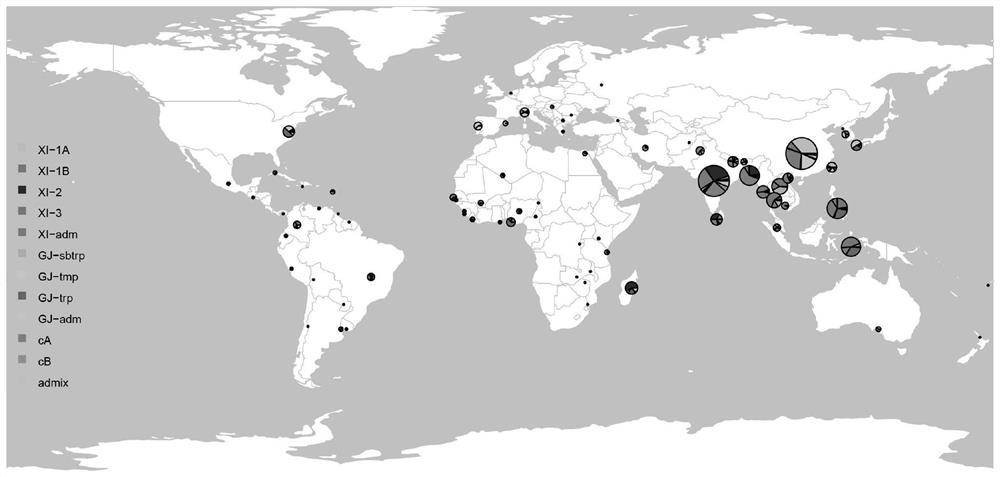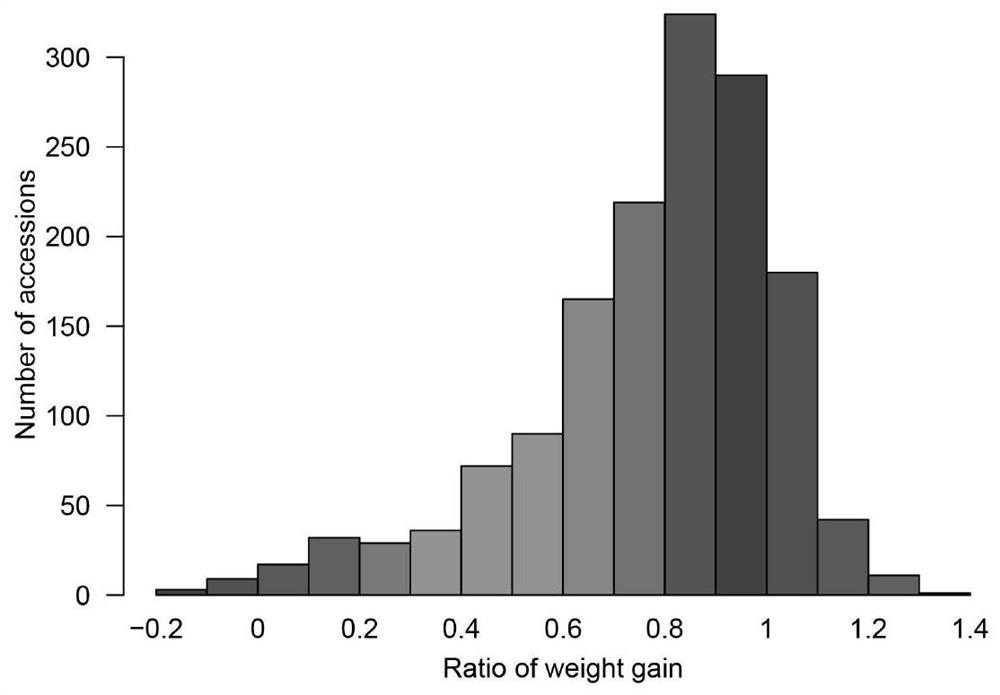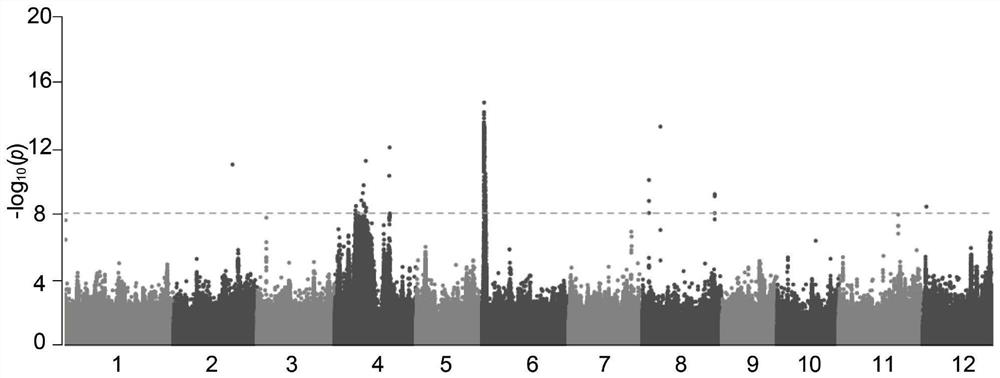Rice brown planthopper resistance gene bph37, protein, vector, host cell, molecular marker, method and application
A brown planthopper resistance and molecular marker technology, applied in application, genetic engineering, plant genetic improvement and other directions, can solve the problems of non-target biological poisoning, increased drug resistance of brown planthopper, increased production cost, etc., to reduce damage and improve brown planthopper resistance. Effect
- Summary
- Abstract
- Description
- Claims
- Application Information
AI Technical Summary
Problems solved by technology
Method used
Image
Examples
Embodiment 1
[0060] Example 1 Cloning of Bph37 gene and development of molecular markers
[0061] 1. GWAS
[0062] Obtained 1520 rice varieties from the Institute of Crop Science, Chinese Academy of Agricultural Sciences, covering 12 types, located in 74 countries around the world ( figure 1 ). 1520 rice varieties were tested for resistance to brown planthopper by measuring the body weight of female adults of brown planthopper before and after feeding. Eight seeds of each test rice variety were sown and grown in a plastic cup (9 x 15 cm). A resistance test was carried out on rice plants at the five-leaf stage. Freshly emerged N. lugens biotype I female adults were collected and weighed with an electronic balance (Shimadzu; type: AUW120D). The brown planthopper with initial body weight of 1.80-2.70 mg was selected for experiment. Each N. lugens was put into a 2 x 2 cm film bag made of parafilm, and then fixed on a rice plant 1 cm away from the soil. The N. lugens fed on the leaf sheat...
Embodiment 2
[0073] Example 2 Functional Verification and Application of Bph37 Gene
[0074] 1. Construction of genetic transformation vector
[0075] Construction of Bph37 gene overexpression vector. The vector used is pCXUN (provided by Professor Wang Guoliang of Ohio State University in the United States). The pCXUN vector is cut with XcmI, and the foreign fragment can be directly connected after adding A.
[0076] According to the results of RACE, PCR method was used to amplify the ORF directly, and after adding A, it was connected into the vector. After the sequence verification is correct, the obtained vector is the Bph37 gene overexpression vector, which is transformed into Agrobacterium EHA105. Pick a single clone for expansion and culture, and after PCR verification, add an equal volume of 50% glycerol to mix, and store at -70°C for later use.
[0077] 2. Genetic Transformation
[0078] The genetic transformation method mediated by Agrobacterium EHA105 (Hiei et al., 1994, Effici...
Embodiment 3
[0081] Example 3 Verification of Molecular Markers
[0082] 1. Materials and methods
[0083] 1.1 Materials: BPH-resistant parent SE382 (containing rice BPH-resistant gene Bph37), brown planthopper-susceptible rice variety Yangdao 6 (93-11), and F hybridized between SE382 and Yangdao 6 2 strain.
[0084] Molecular marker primers: 156-35, the nucleotide sequences of which are respectively shown in SEQ ID No.4-5.
[0085] 1.2 Method
[0086] Genomic DNA was extracted from rice samples by CTAB extraction. Sample DNA was amplified with primer 156-35. 10 μl system. 10μl reaction system includes: 2×Es Taq MasterMix (Dye), 5.0μl; ddH 2 O, 3.7 μl; 10 μM primer, 0.4 μl; and 50 ng DNA template. The amplification reaction was carried out on a BioerPCR instrument: 94°C for 3min; 94°C for 30s, 55°C for 30s, 72°C for 60s, 30 cycles; 72°C for 5min. The amplified products of 156-35 were separated by 1% agarose gel and analyzed directly after electrophoresis.
[0087] 2. Results: Usin...
PUM
 Login to View More
Login to View More Abstract
Description
Claims
Application Information
 Login to View More
Login to View More - R&D
- Intellectual Property
- Life Sciences
- Materials
- Tech Scout
- Unparalleled Data Quality
- Higher Quality Content
- 60% Fewer Hallucinations
Browse by: Latest US Patents, China's latest patents, Technical Efficacy Thesaurus, Application Domain, Technology Topic, Popular Technical Reports.
© 2025 PatSnap. All rights reserved.Legal|Privacy policy|Modern Slavery Act Transparency Statement|Sitemap|About US| Contact US: help@patsnap.com



